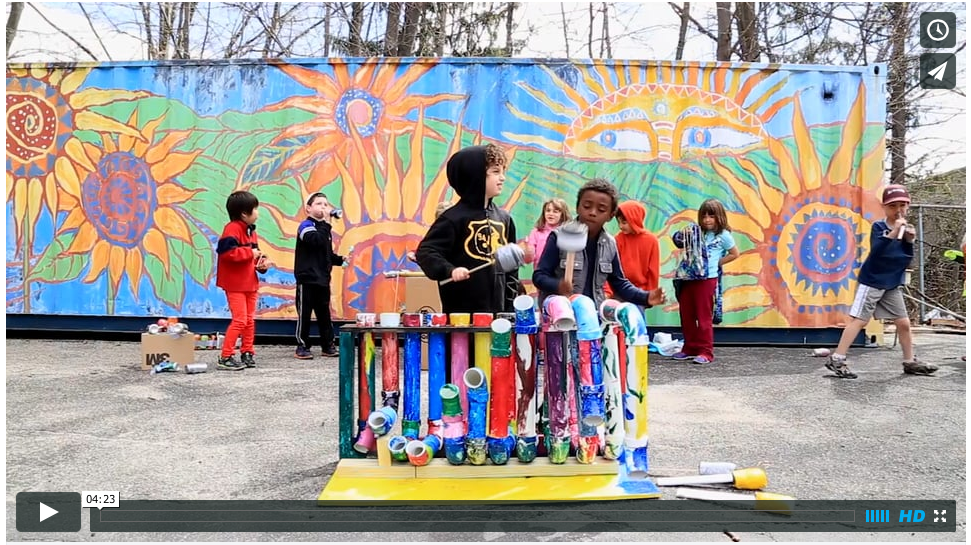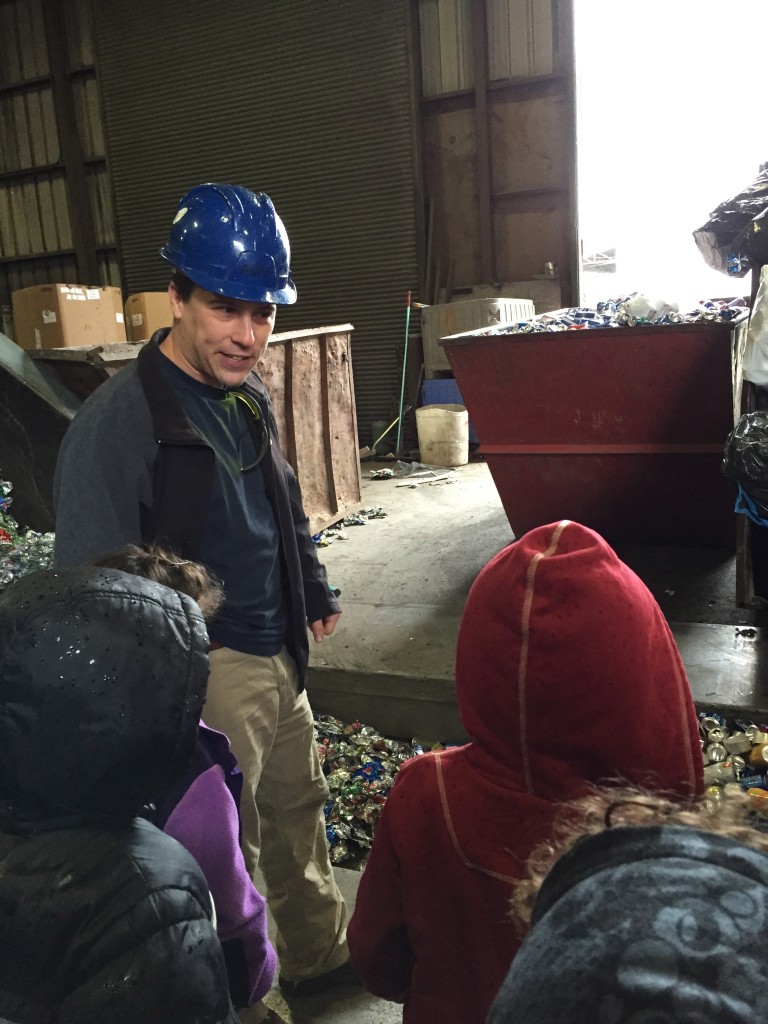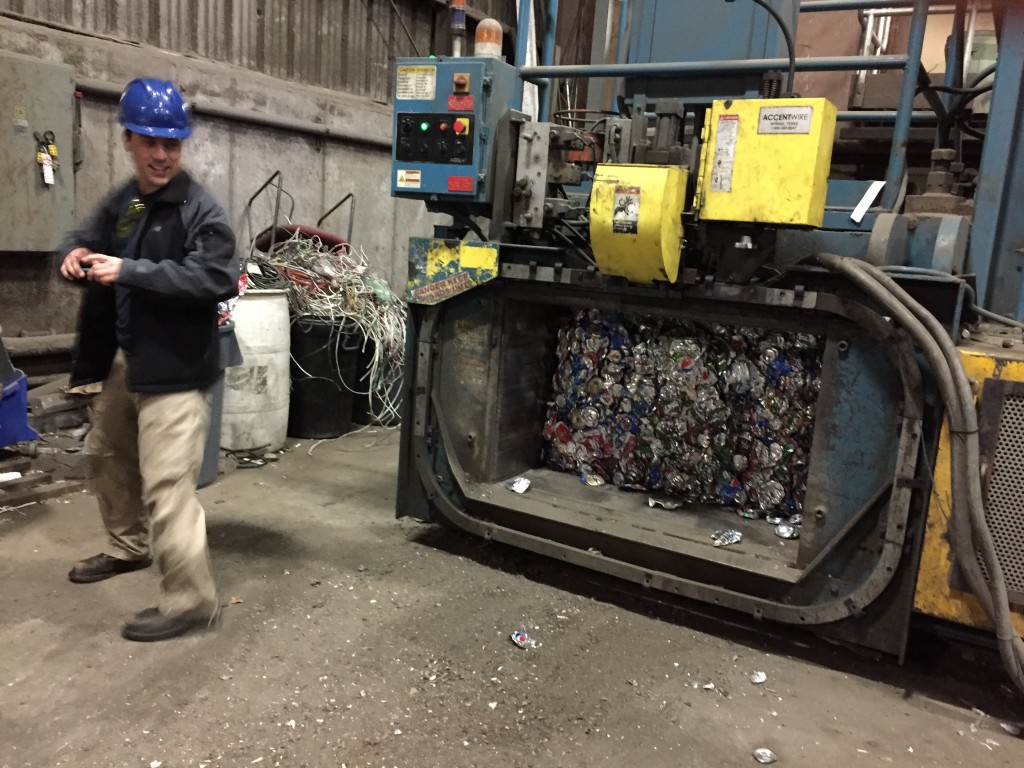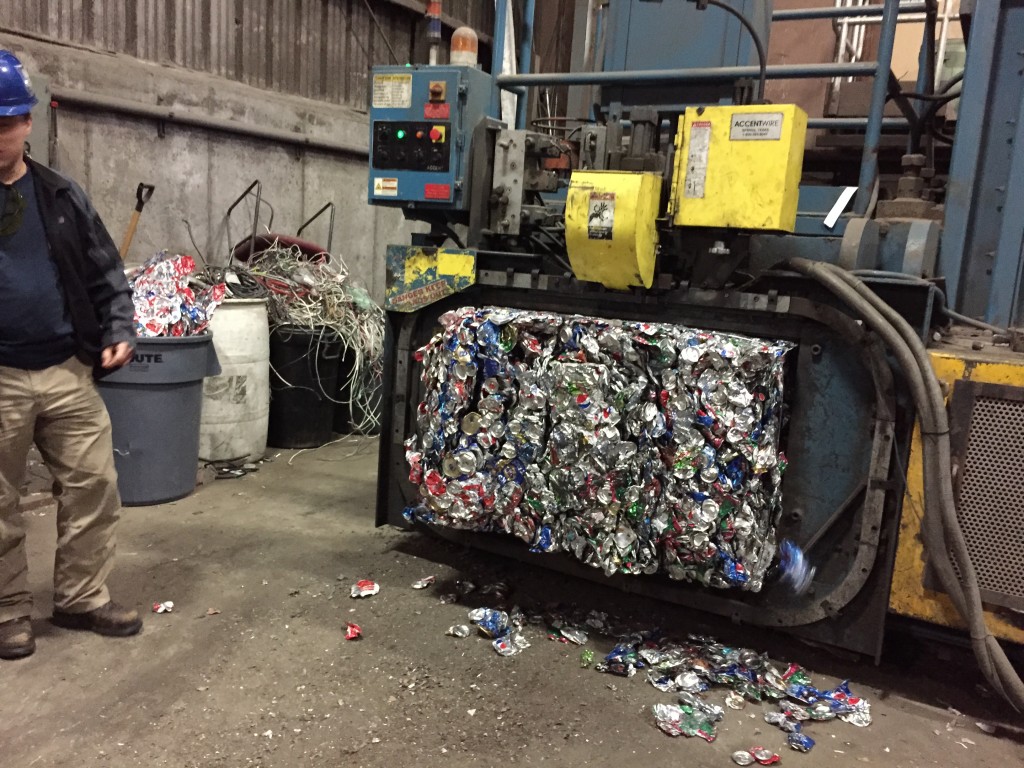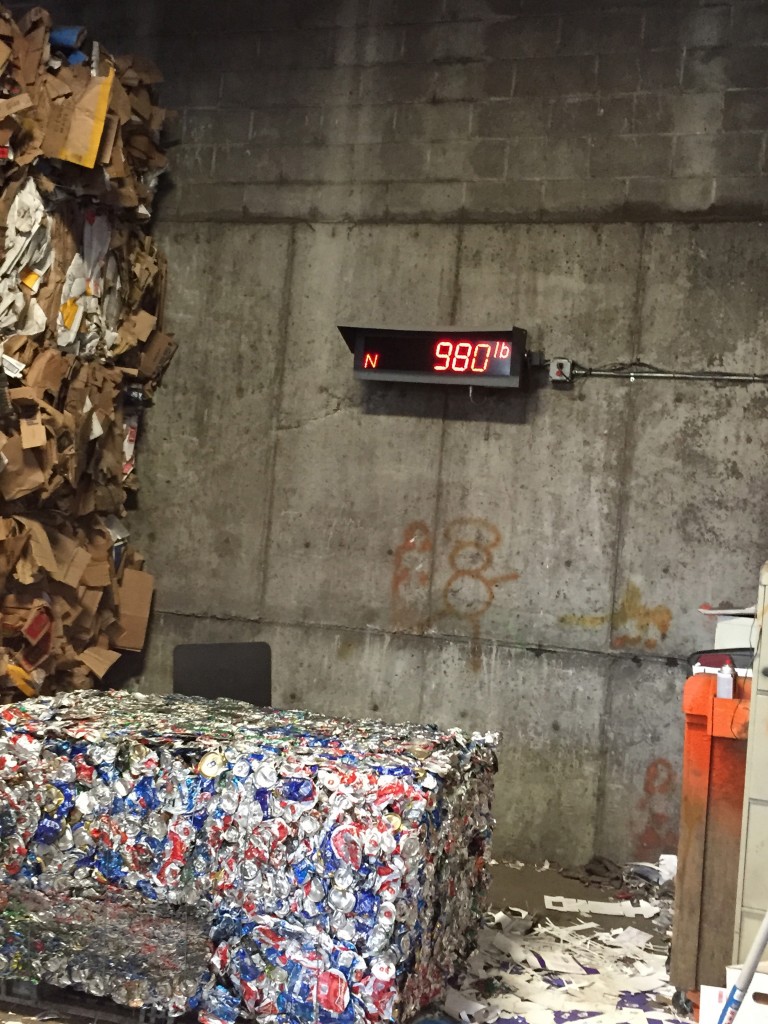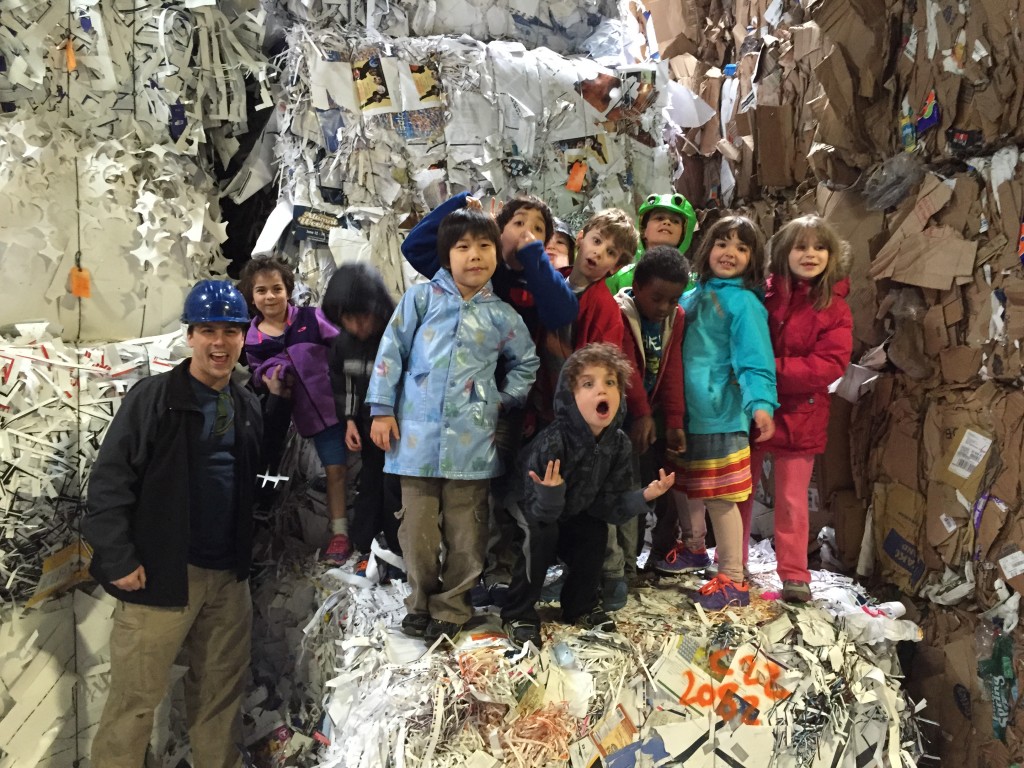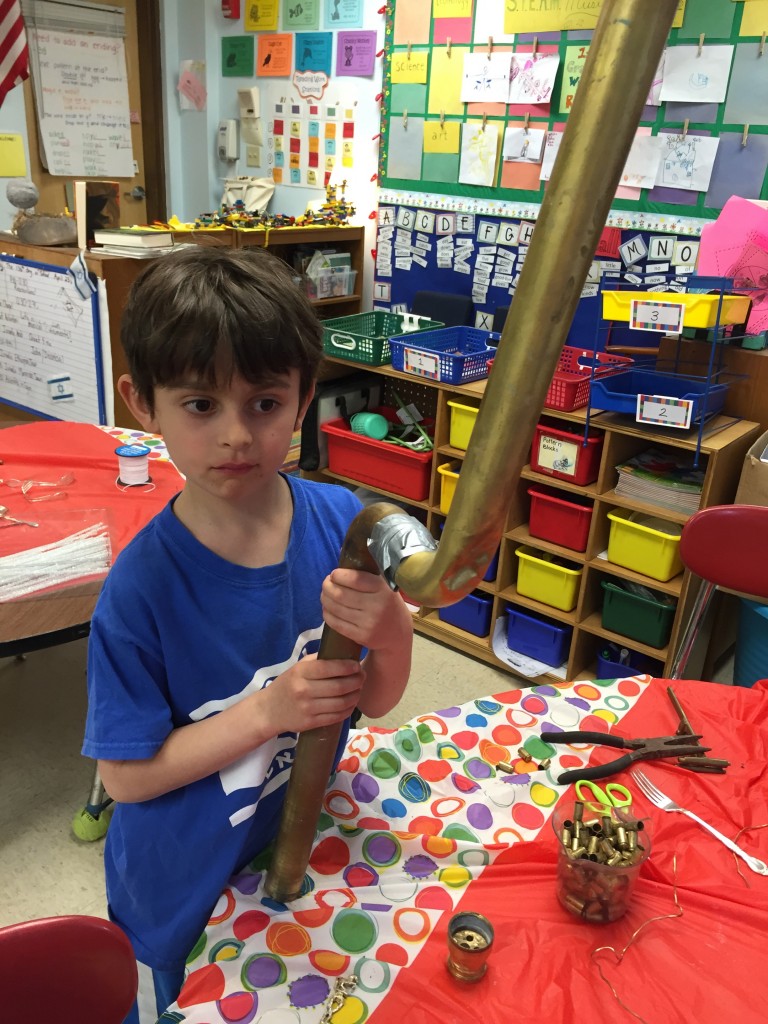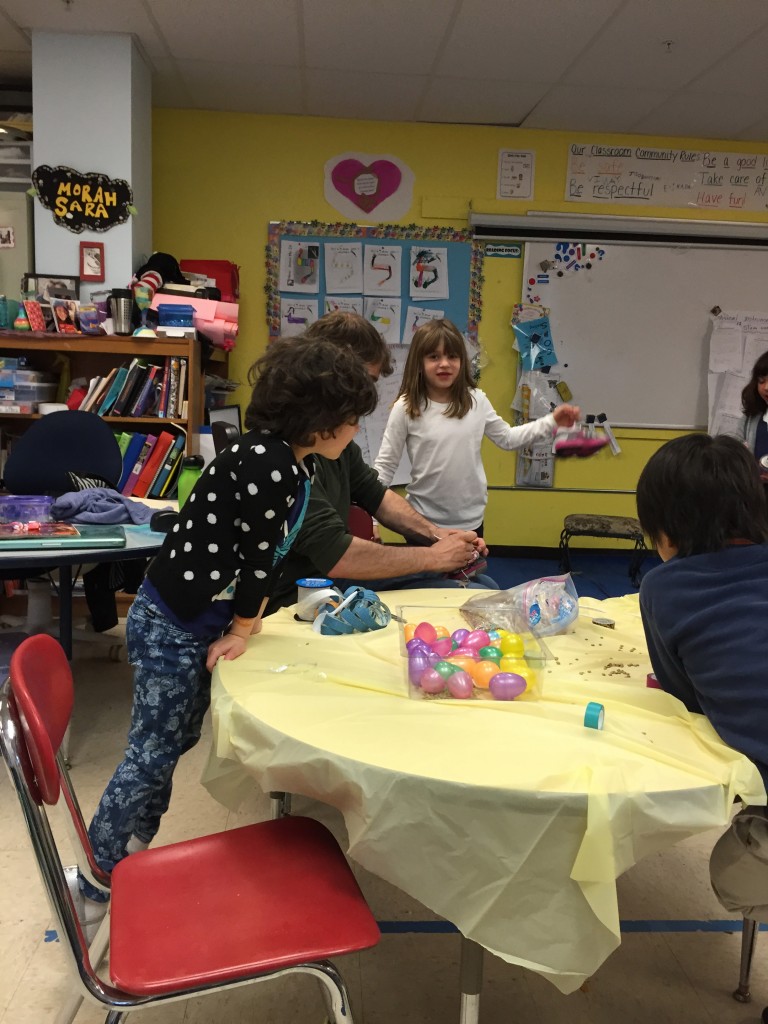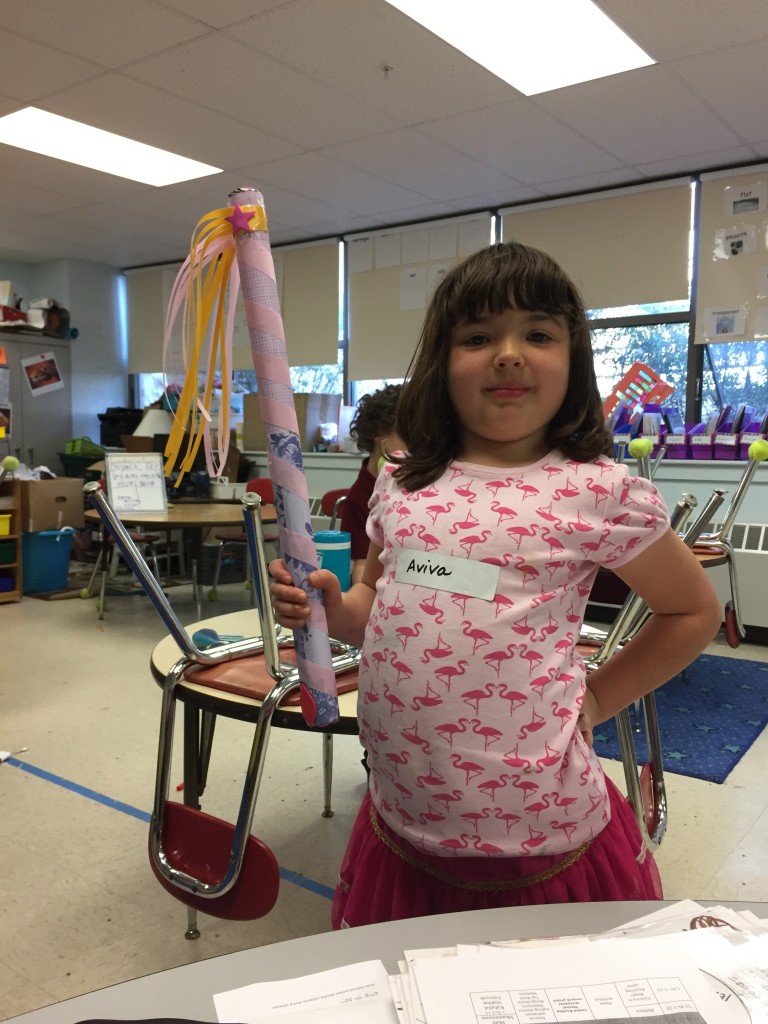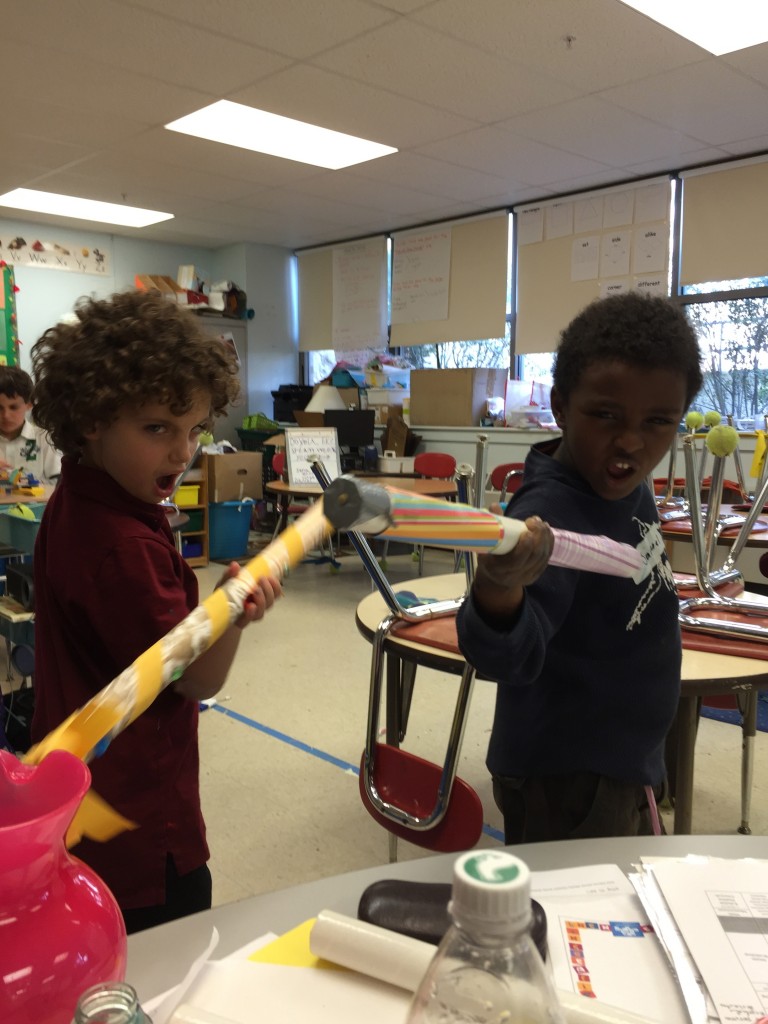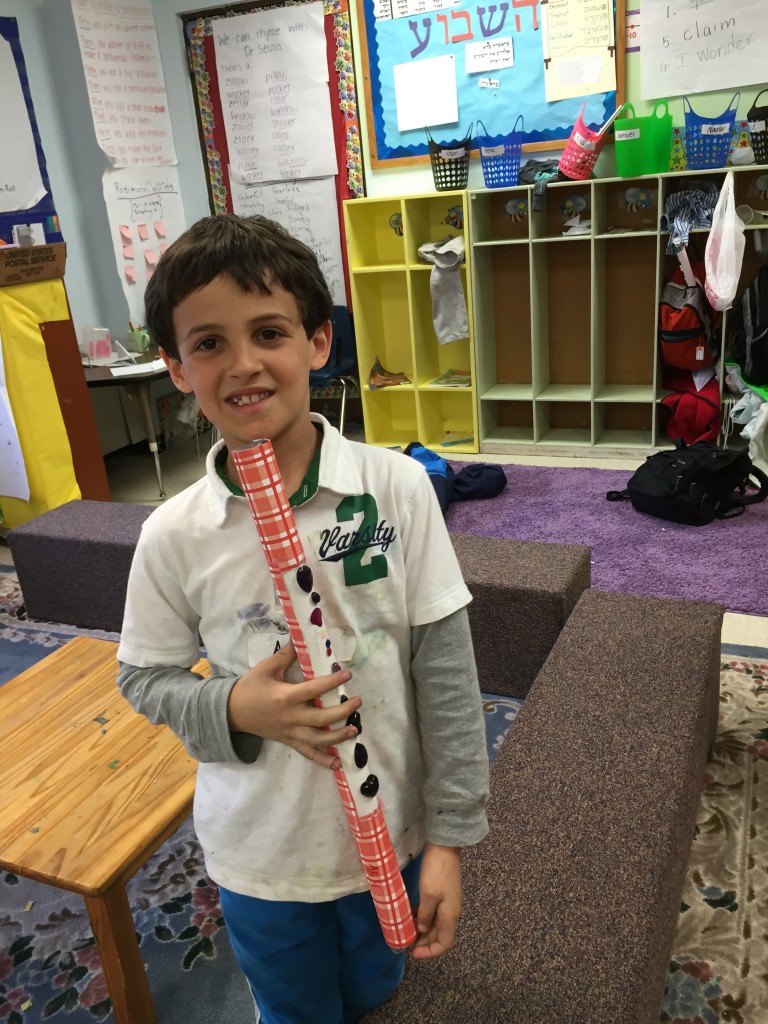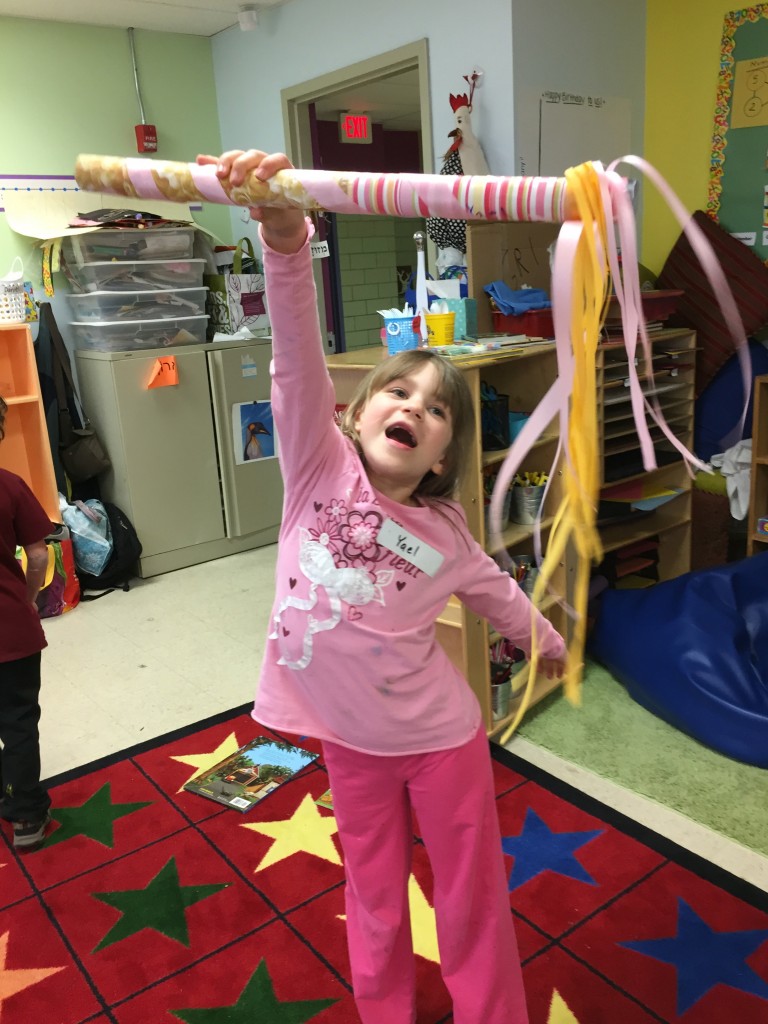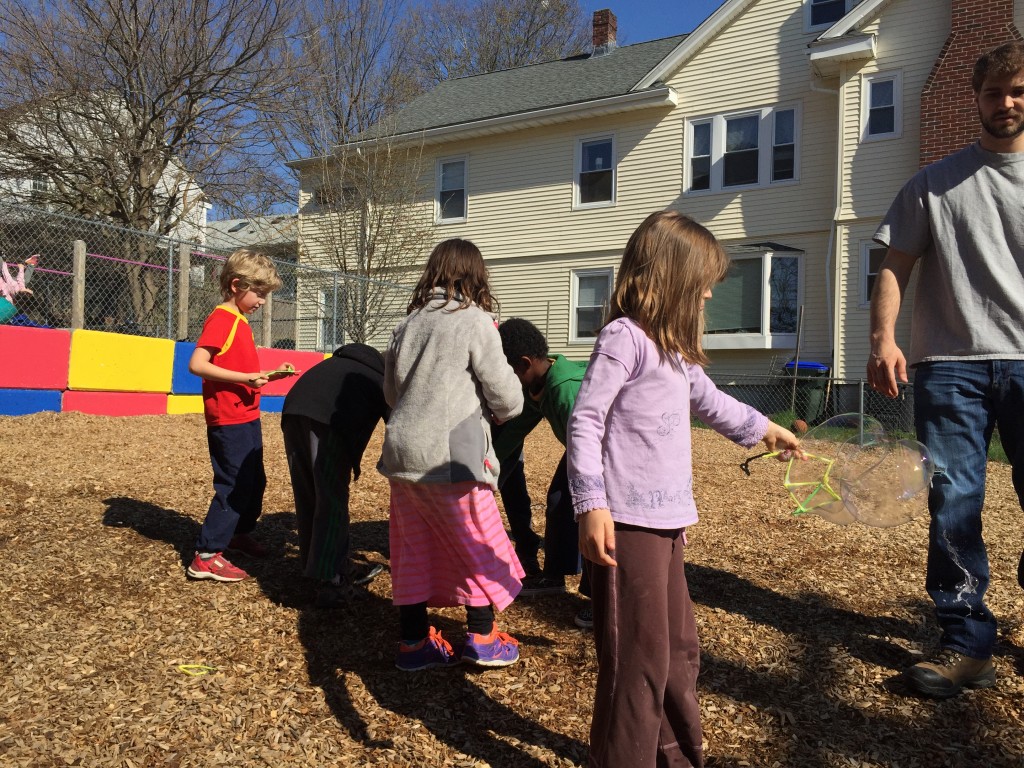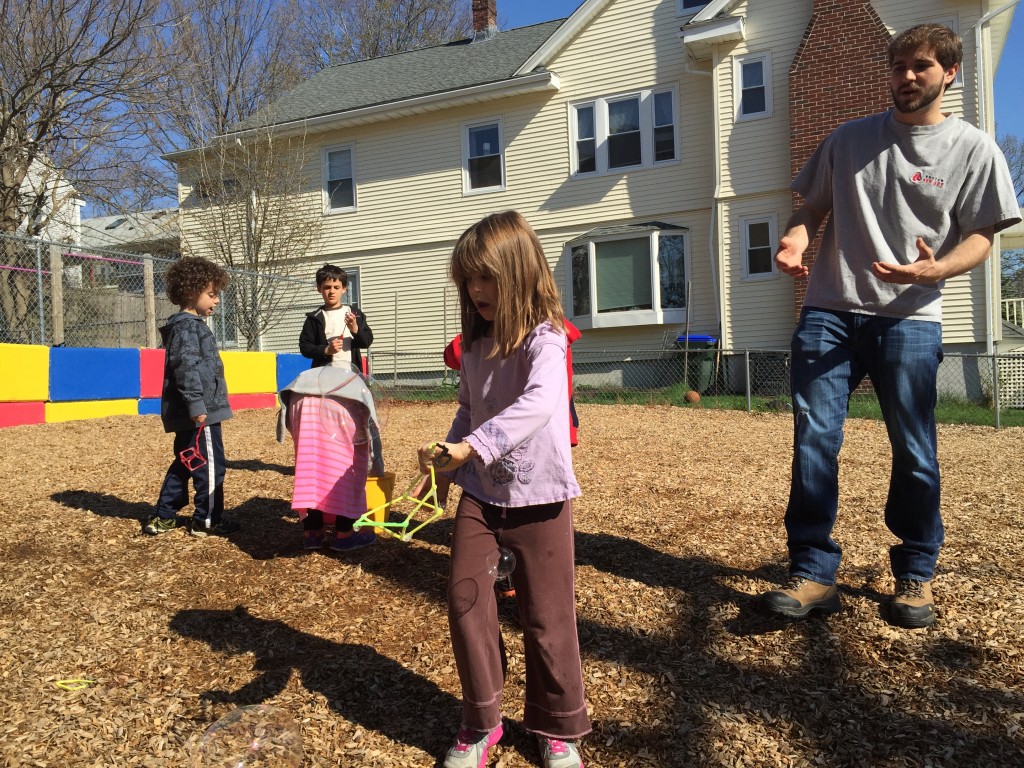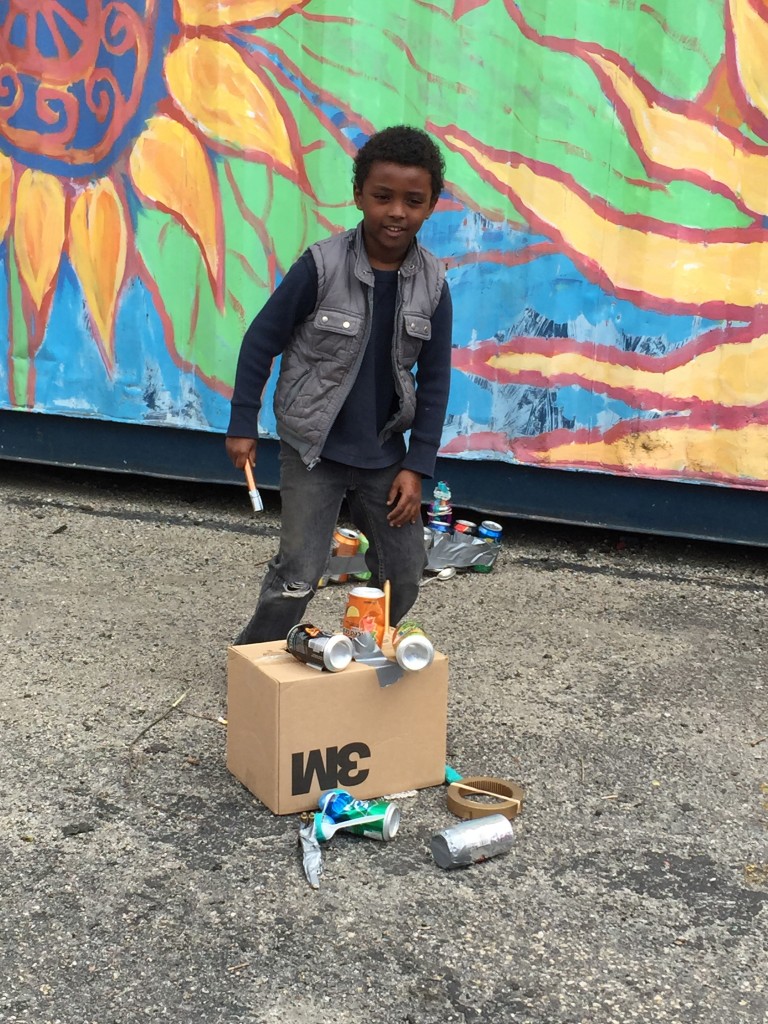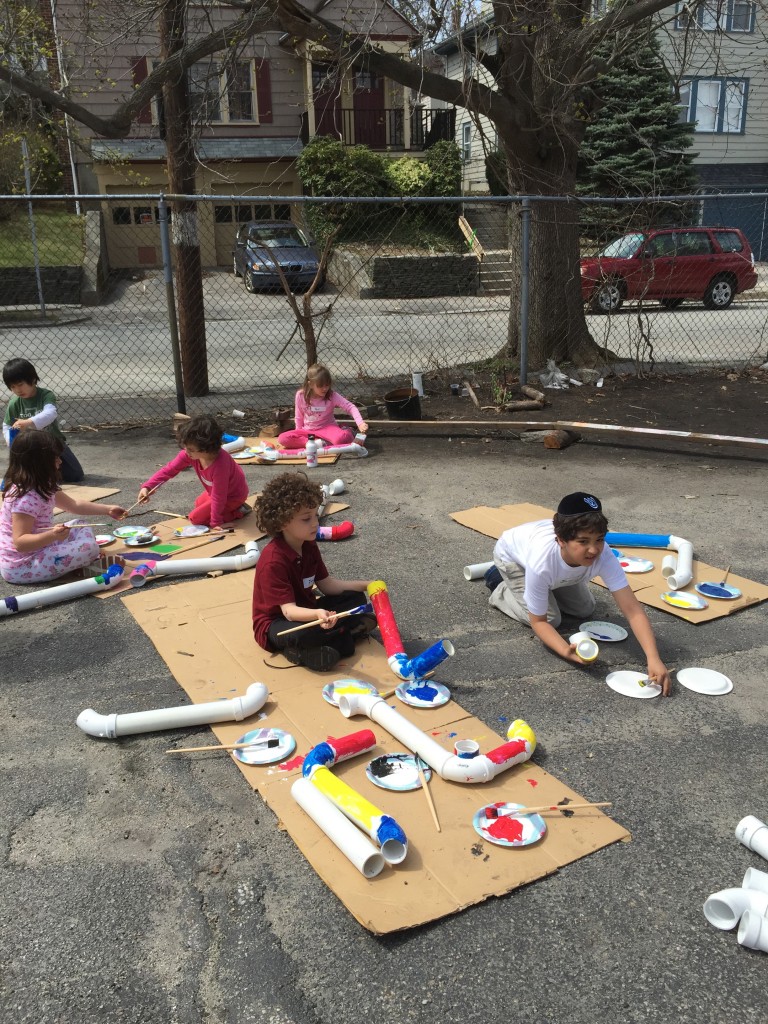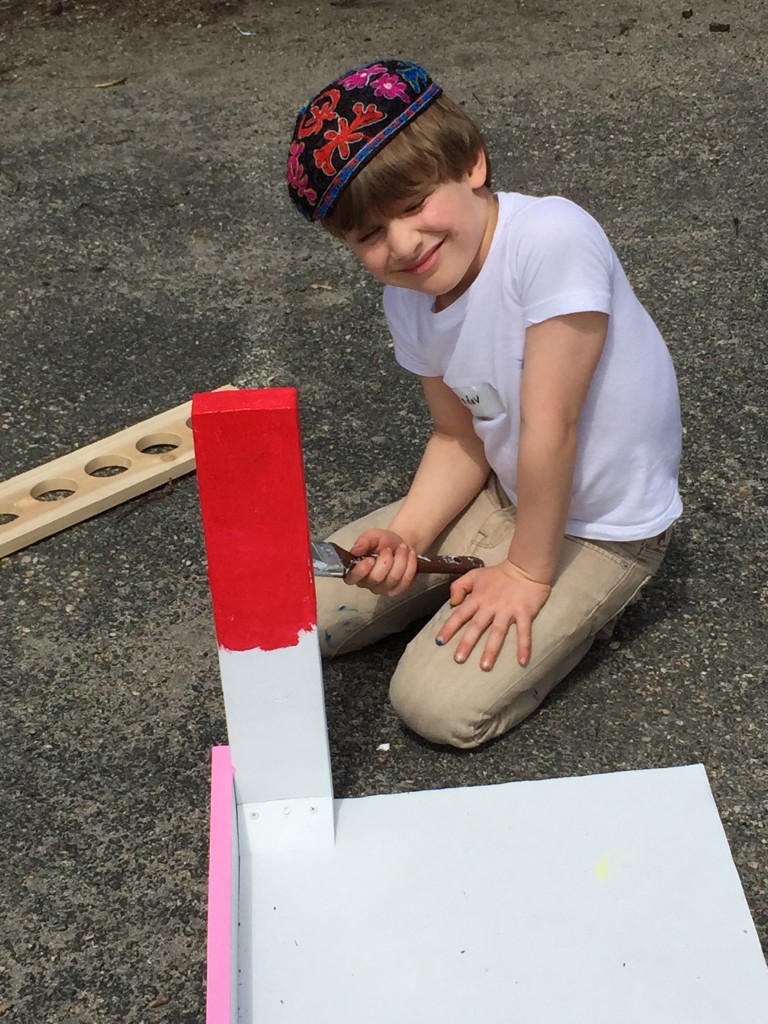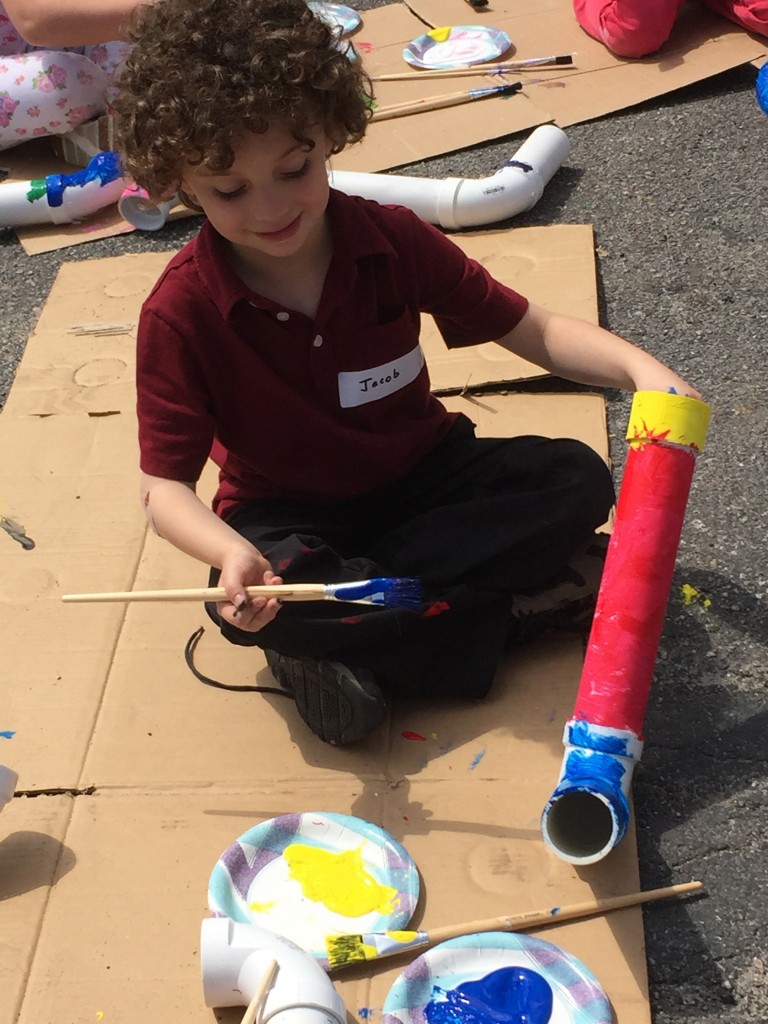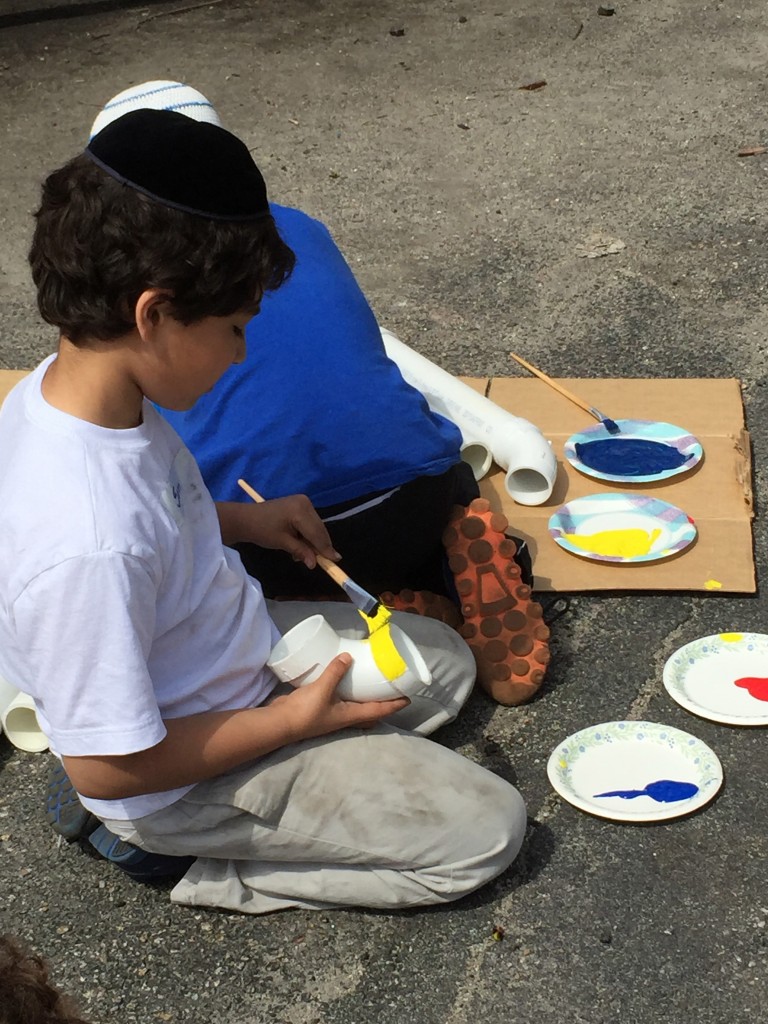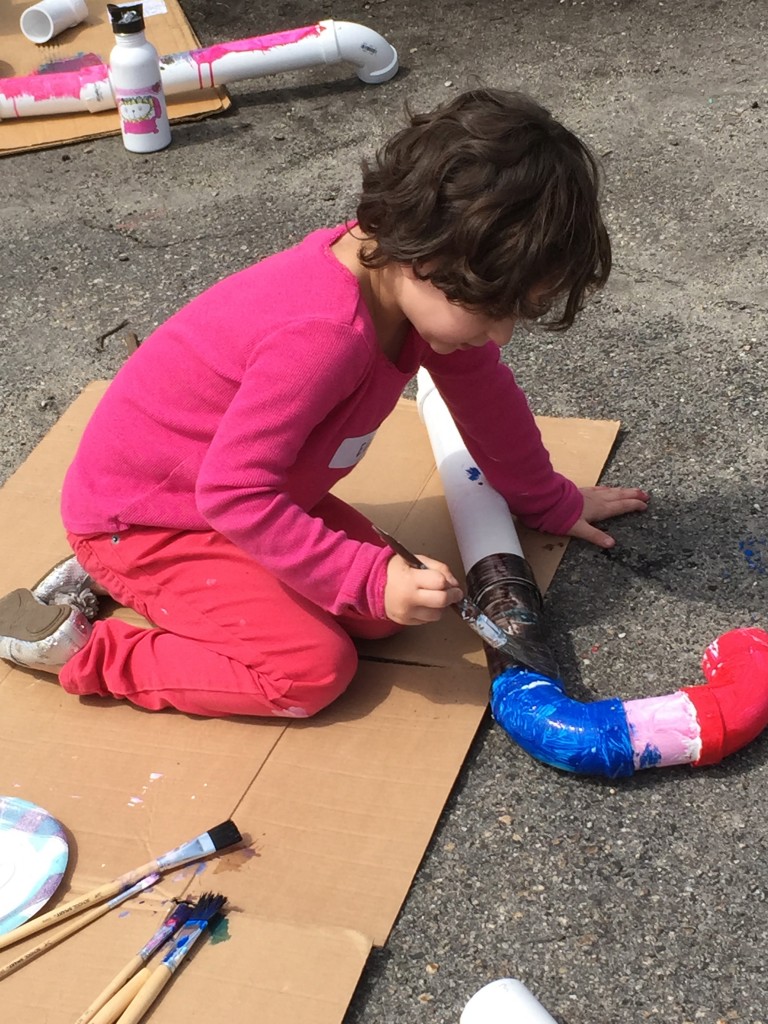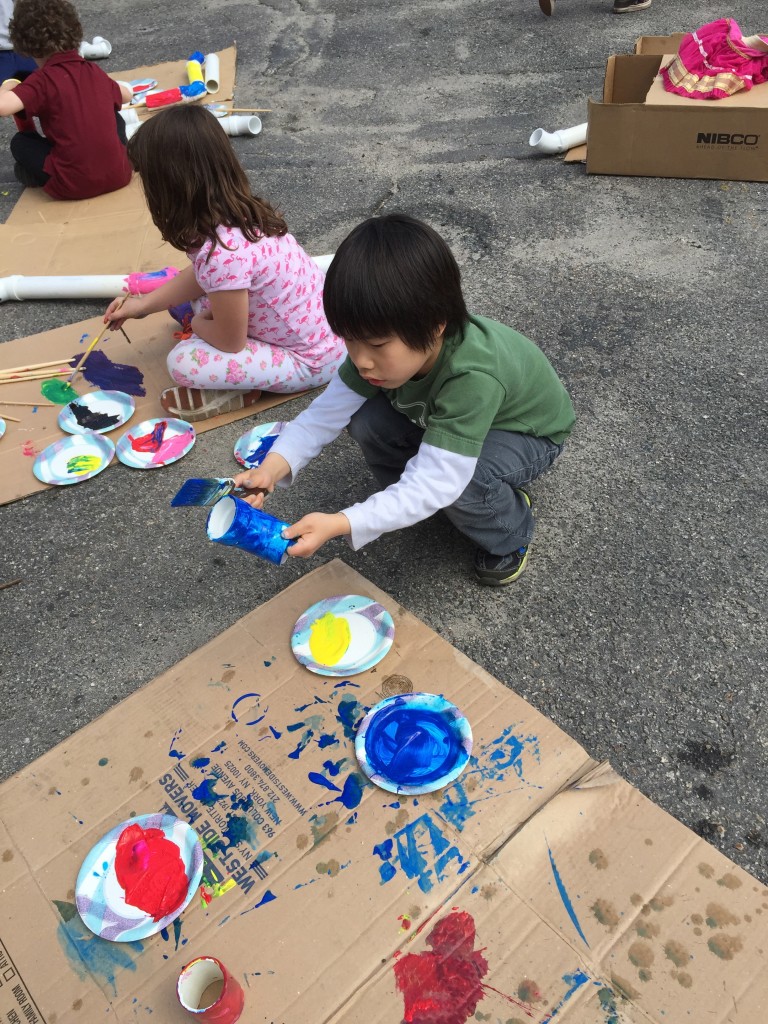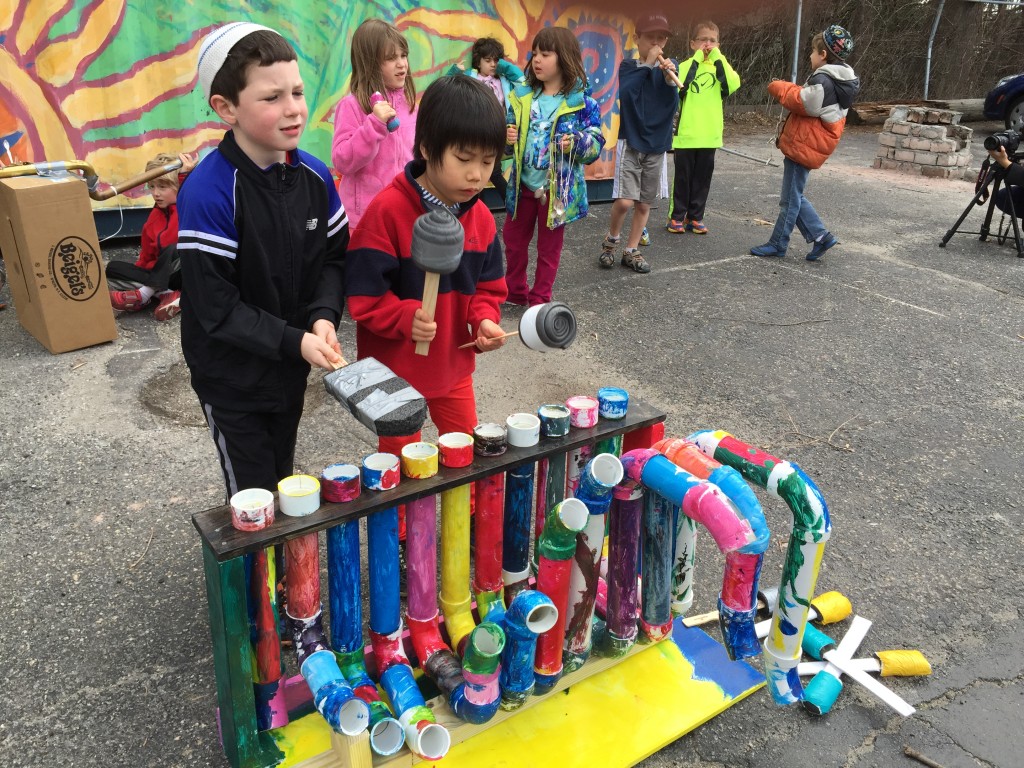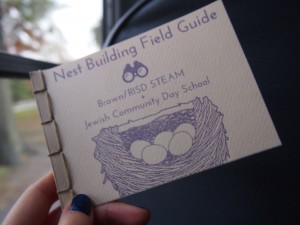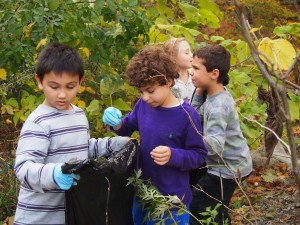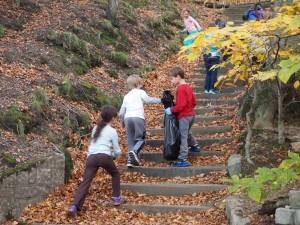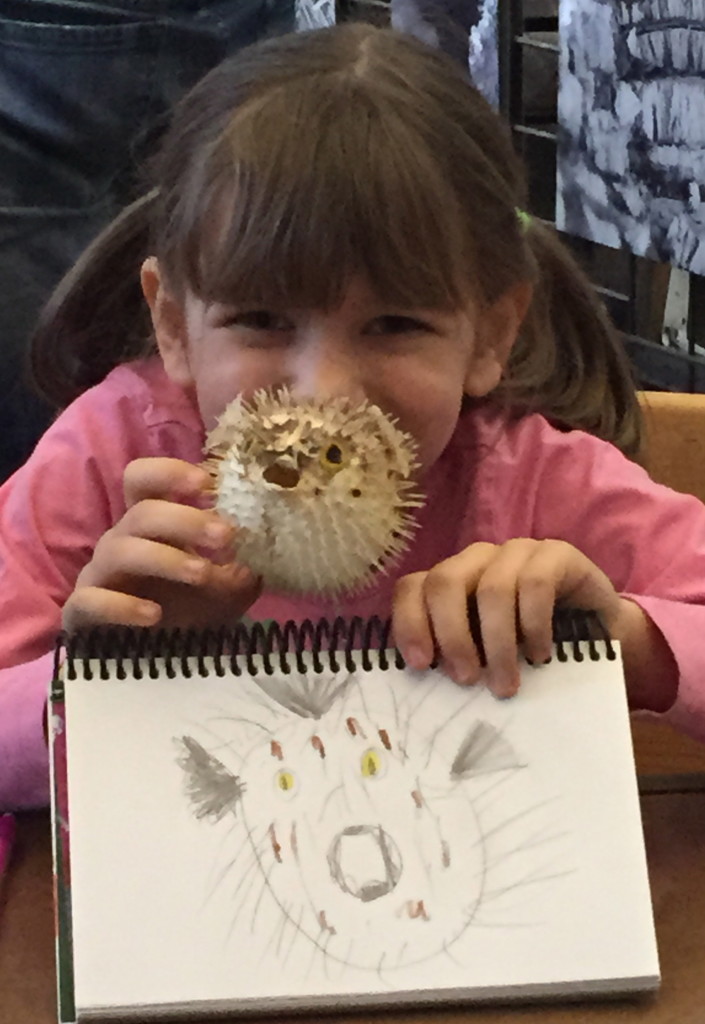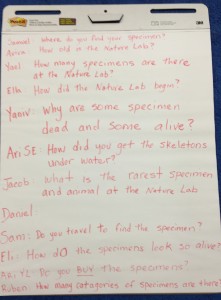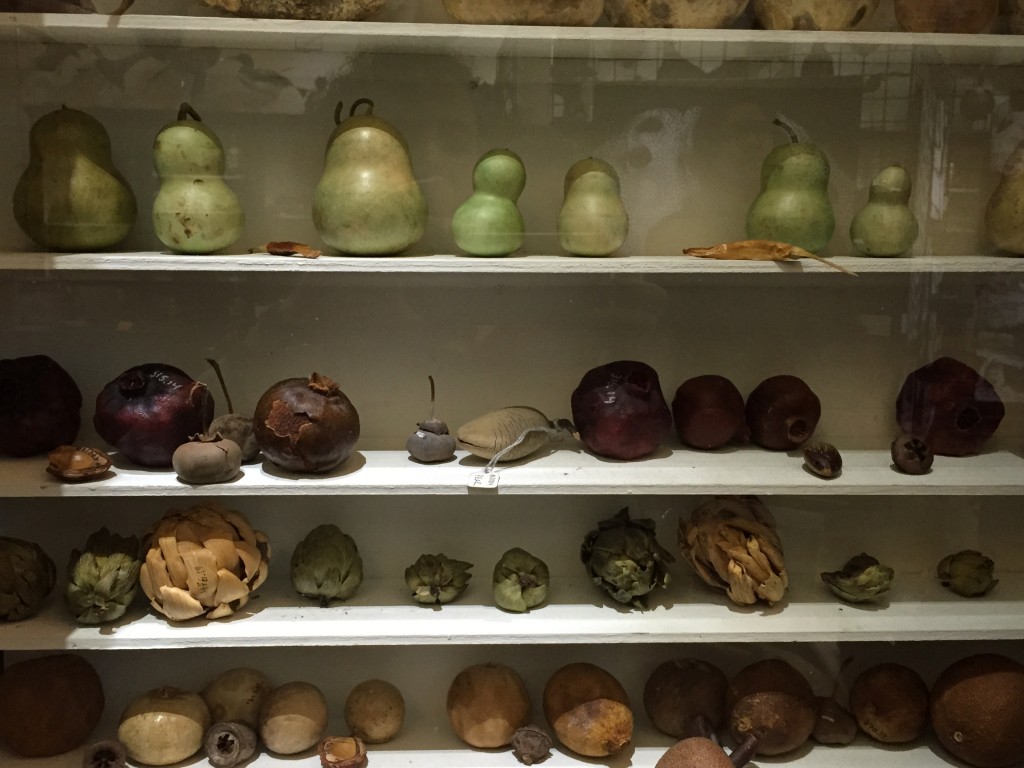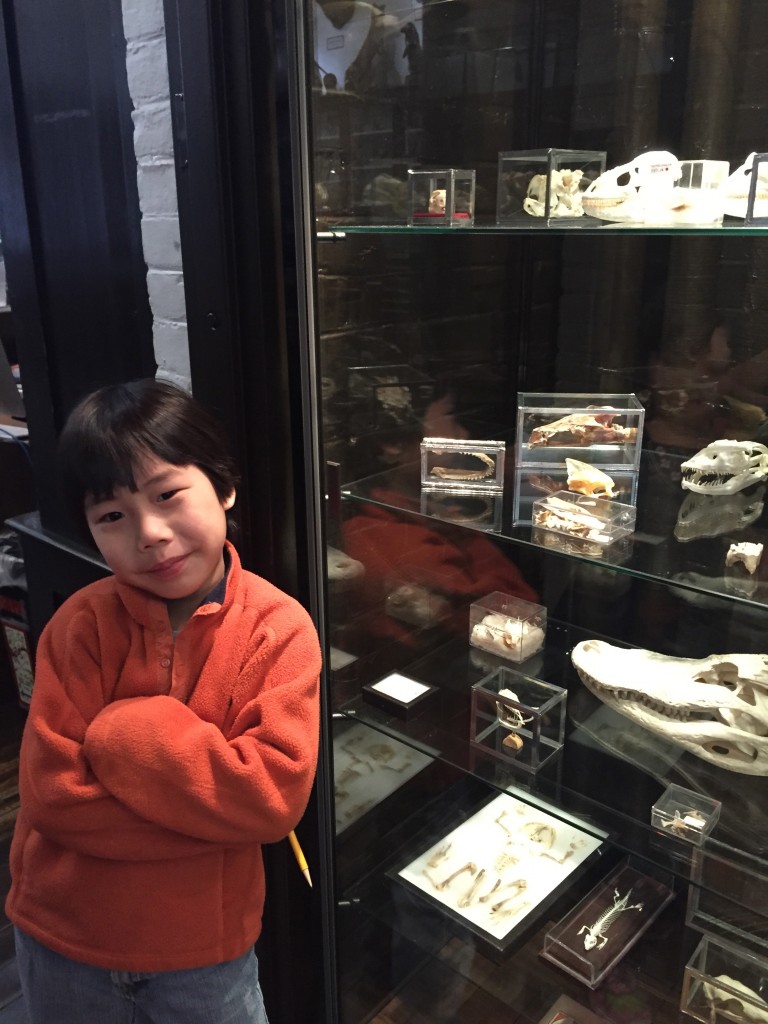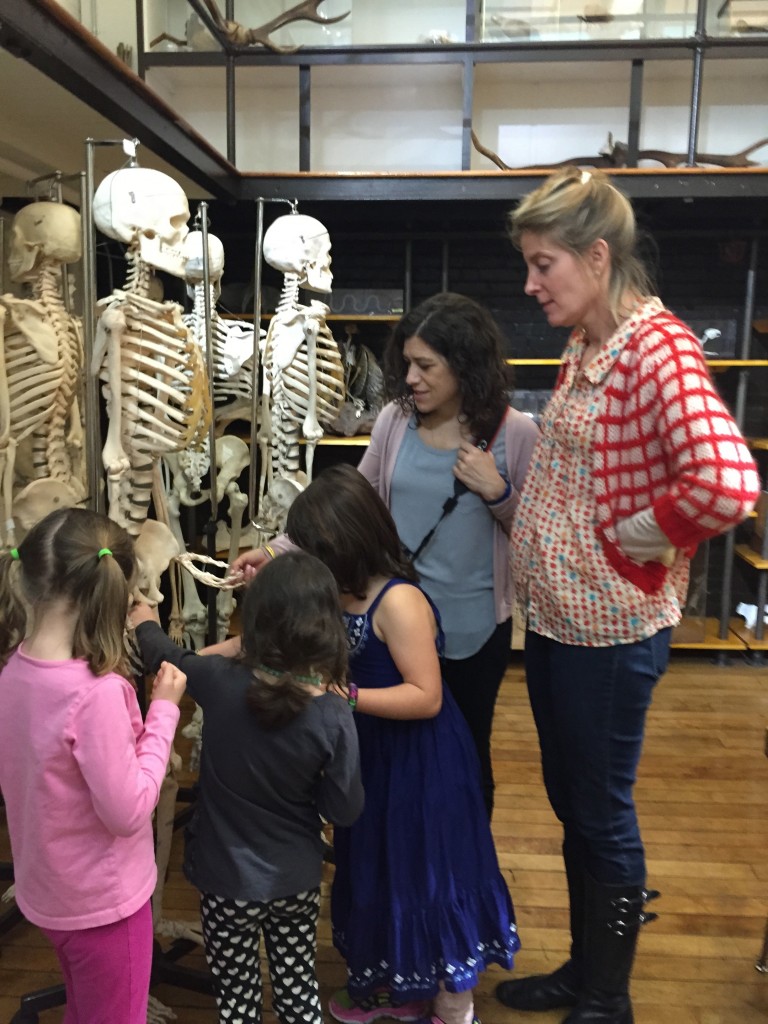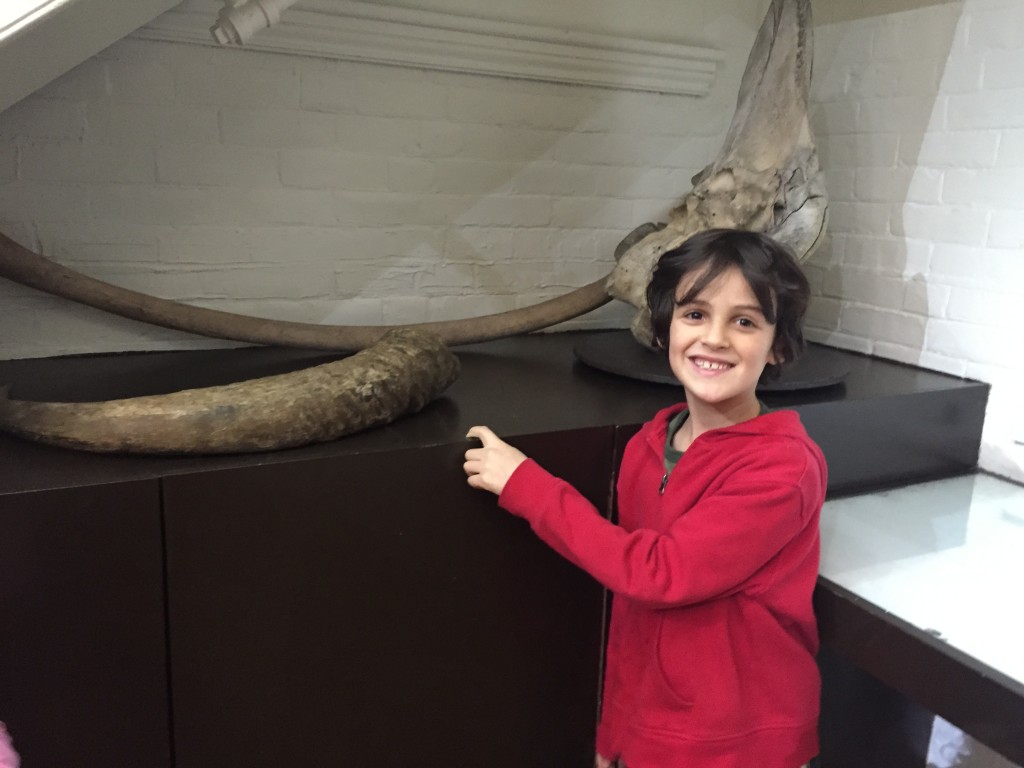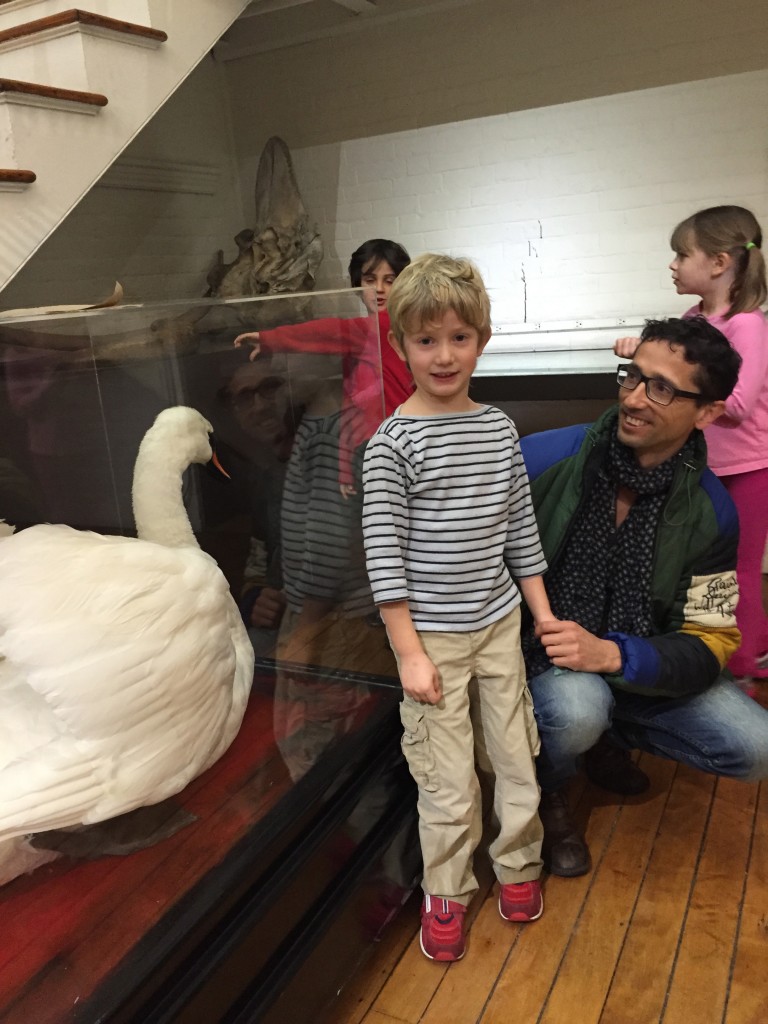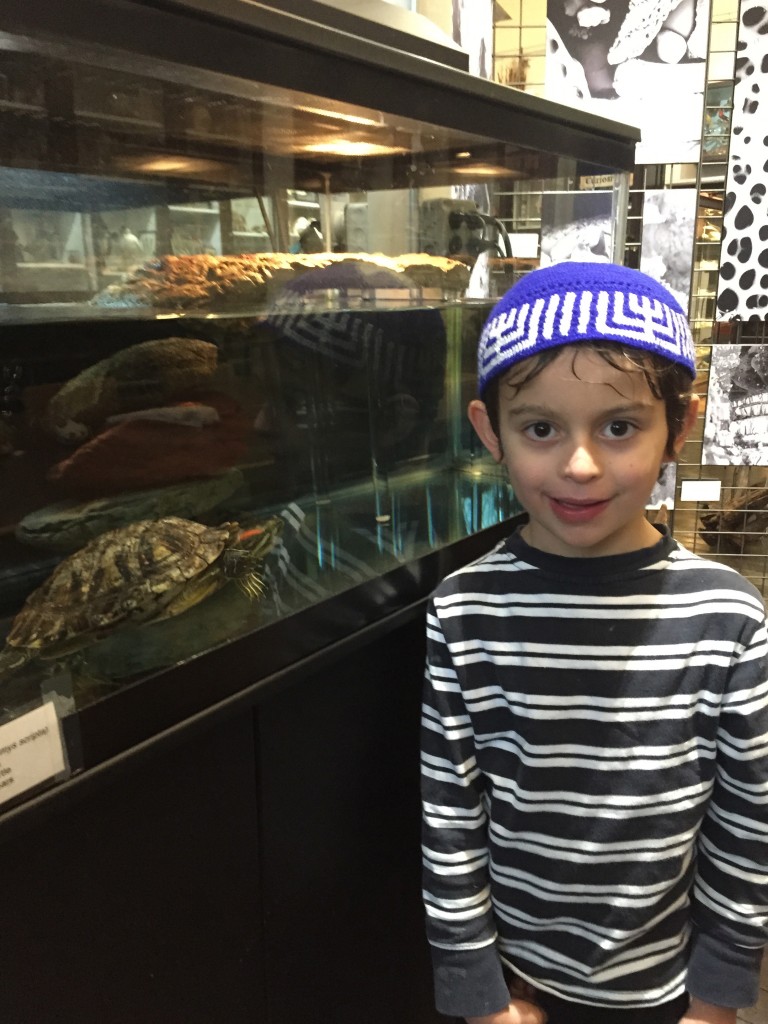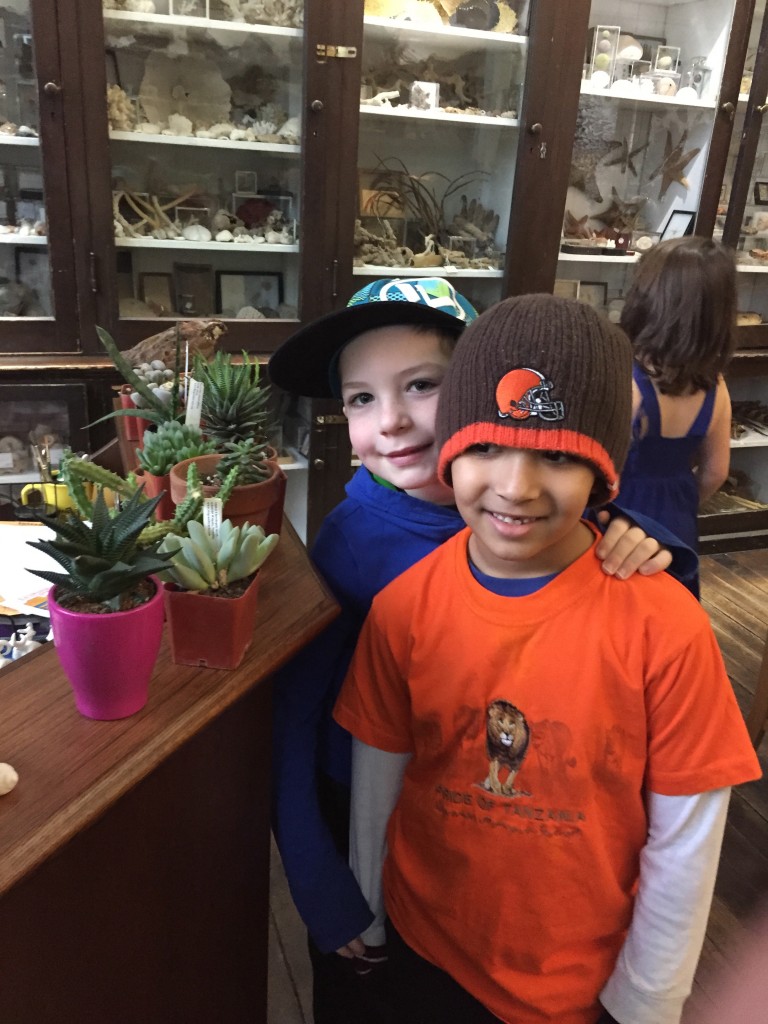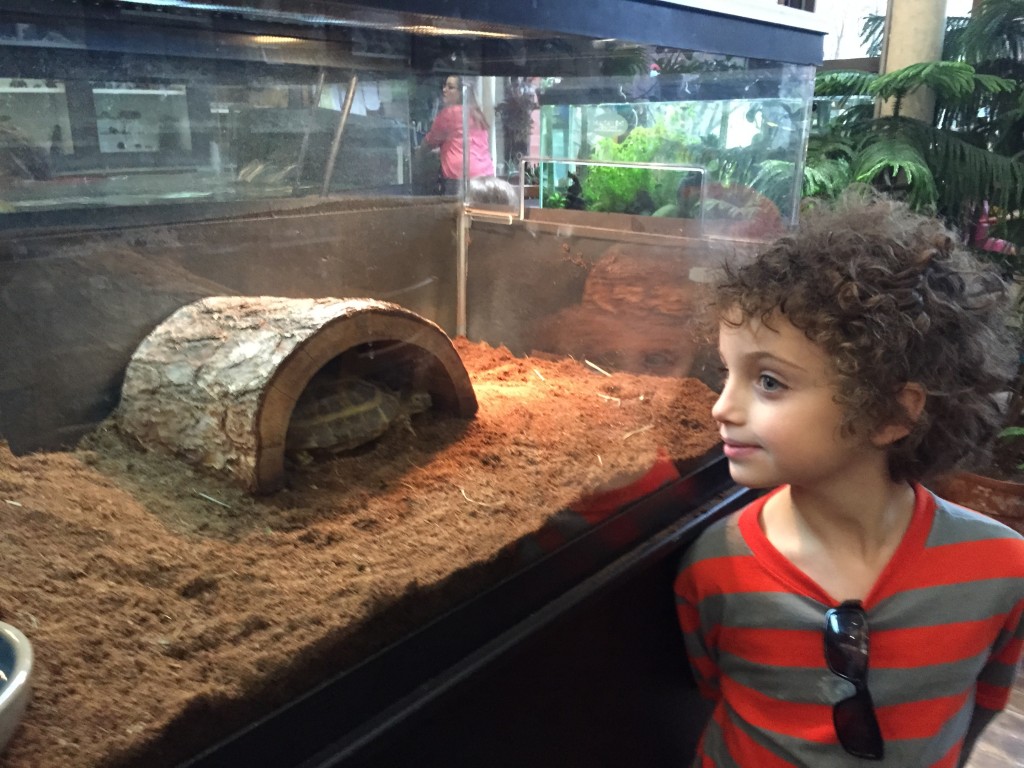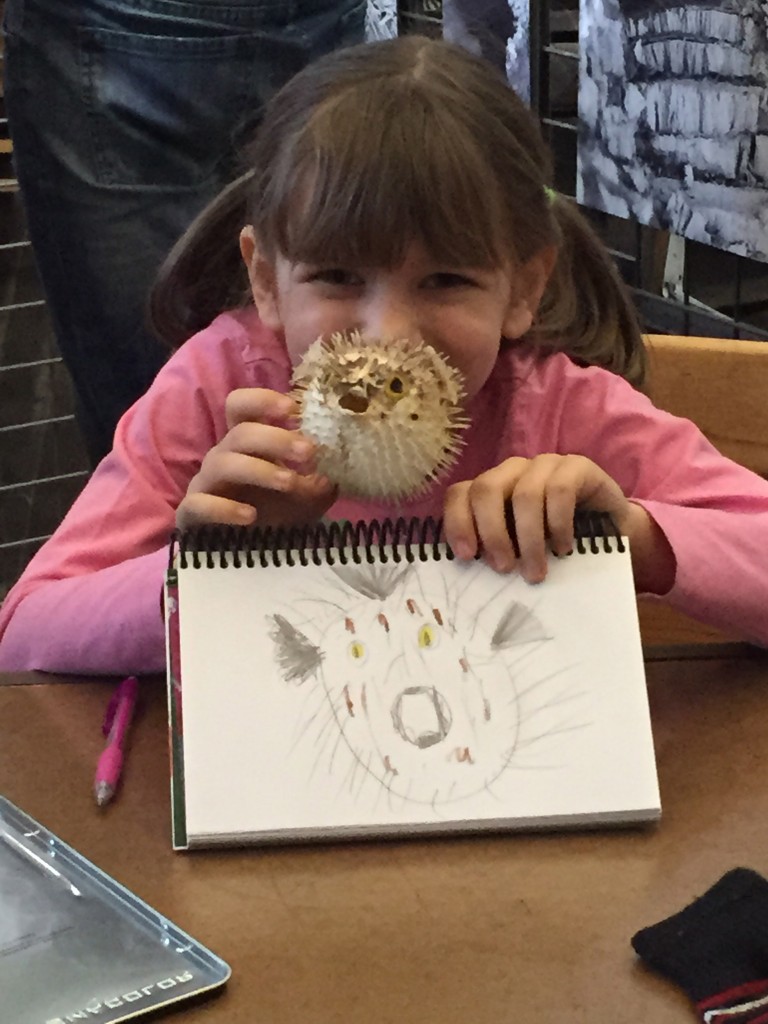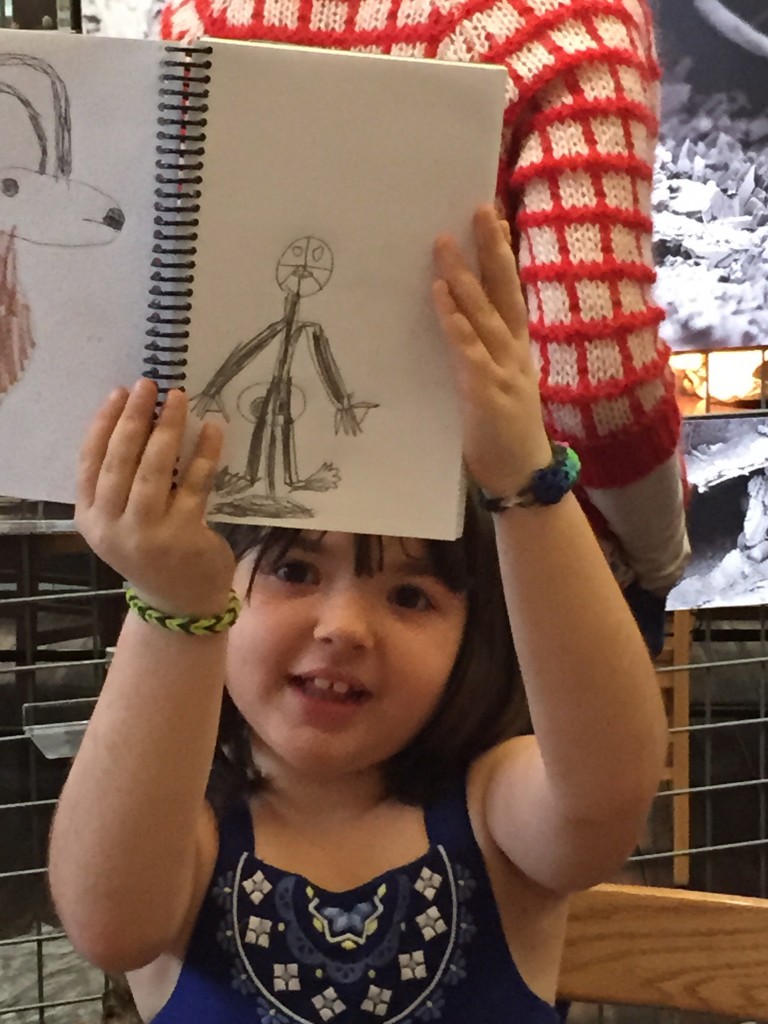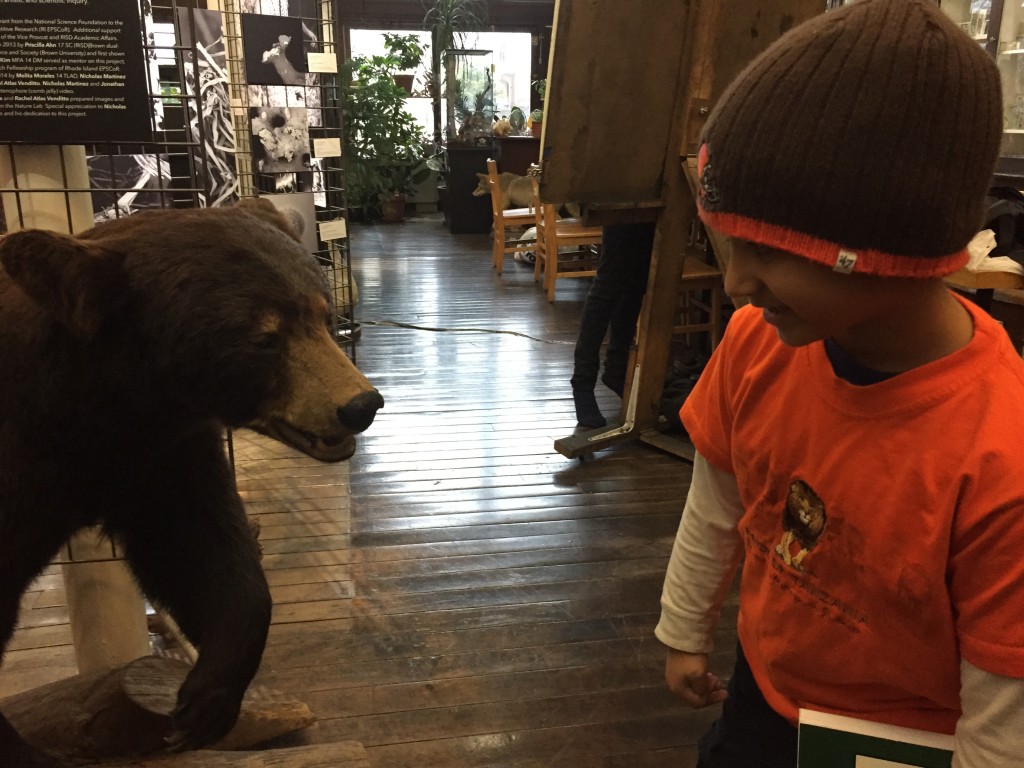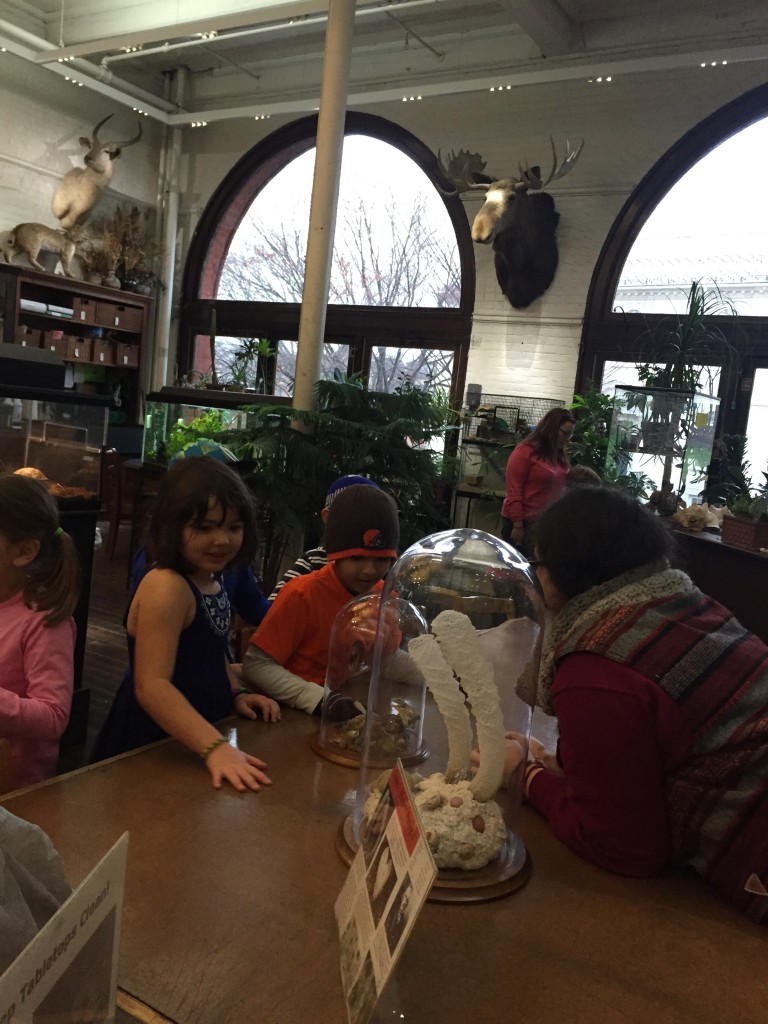We are delighted to share this incredible video highlighting our partnership with the Brown/RISD STEAM club. We hope you enjoy this introduction to Design Thinking at work at JCDSRI! [su_vimeo url=”https://vimeo.com/143611780″]
STEAM
It’s STEAMy in First Grade!
It was so STEAMy (Science, Technology, Engineering, Art, Math (or Music) in First Grade last week!
Between our Siddur Ceremony, STEAM week and Yom Ha’atzmaut (Israel’s Independence day) the week flew by!
We began with a fantastic trip to Berger Recycling in Pawtucket. Adam Sinel was our tour guide throughout the center.
A bale of tin cans
Can you guess how much it weighed?
Math!
Happy kids surrounded by bales of paper.
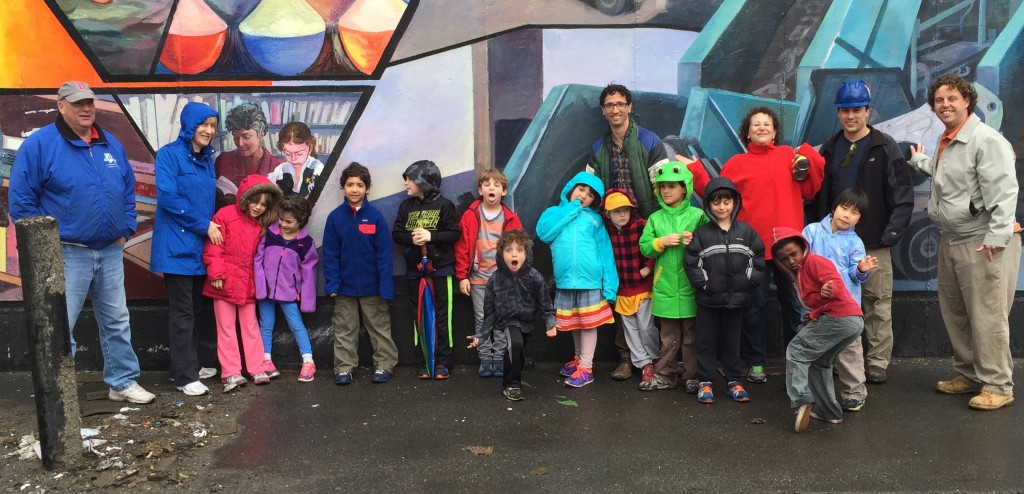 Such a great day!
Such a great day!
We took home with us three boxes full of recycled material. Then used them to Engineer their own musical instrument throughout the week.
Duck tape was a key material used this week.
Check out the cool spoons, and keys!
Next, we read a book about an African folktale about summoning the rain then we made our own rain makers!
On Wednesday the students learned all about Tensile structures which are a object that has at least two anchors with a flexible material that is stretched between the anchors. We studied Architecture by famous Architects such as Felix Candela, Antonio Gaudi, Santiago Calatrava and Frei Otto.
We made our own tensile structures using pipe cleaners, straws and my special bubble formula.
The highlight of the week was working with our Brown and RISD students to create our outdoor PVC pipe organ. It will be installed on the playground so everyone can enjoy the magic!
Ta Da!
It is finished! Our proud students are preforming on their instruments. Did you know that our music was recorded and will become the soundtrack of the KinderSTEAM video?
STEM Labs vs. STEAM Labs vs. MakerSpaces vs Design Labs: Whats the difference?
If you have been paying attention to educational buzzwords recently, you may have noticed a slow migration of thought. First, we were obsessed with STEM (Science, Technology, Engineering, and Math). Then we moved from STEM to STEAM, adding an A for the Arts to humanize the purely scientific study of STEM. This initiative was led by our partners and neighbors at the Rhode Island School of Design (RISD). Many schools and universities are rebranding their STEM labs STEAM labs and beginning to incorporate art and the esthetics into their engineering and technology projects.
You may have also noticed the advent of Makerspaces. The Maker movement is akin to a 21 century do-it-yourself shop class. People use the new tools of the trade – Arduino motherboards, 3D printers, vinyl cutters, and soldering irons. The Maker movement is about creating with technology- not just buying it. Makers make their own cameras, musical instruments, computer tablets, drones and artificial limbs. It is an exciting way of mastering and welding technology that puts the power of curiosity, ingenuity, and initiative into the hands of everyone who wants to create.
Makerspaces are springing up all over the place-even in k-12 and elementary schools. At the National Association of Independent Schools annual conference, held last week in Boston, 25 schools from across the country submitted their school’s Maker Spaces to a gallery for all to observe (JCSDRI was one of them: Check out the NAIS Makerspace website here:)
The newest related buzzword is Design Thinking. Design Thinking is essentially a way of looking at needs, problems, and solutions by putting people and values first. It is ‘human centered’ and based primarily on empathy. The first role of the Designer is to observe, ask questions, understand the user’s needs and values, and the ‘make.’ The key mindsets of Design Thinking are a bias towards action, people above products, radical collaboration, rapid prototyping, and failing fast forward. Design thinking is about ‘how’ we think, before addressing content or skills.
We at JCDSRI love the STEAM movement (click here to learn more about our amazing relationship with Brown/RISD STEAM) and the Maker movement, but we are proud that what we have created is a DESIGN Lab. Design starts with values, empathy, and understanding. These core human skills – asking, listening, observing, and empathizing are part of our Jewish and educational mission.
Tags: K12, education, design, STEM, STEAM, Brown, RISD, kinderSTEAM,
Avian Architecture Workshop by RISD STEAMmates
This past fall, students from the Brown/RISD STEAM club came to JCDSRI to give interdisciplinary lessons to tie together what the students were learning in different classes. Anthony Peer (RISD Industrial Design ’16) and assistant Soo Hyun Shin (RISD MFA Graphic Design ’15) led Avian Architecture, a workshop that gave the 3rd and 4th grade students a hands-on look into the construction of a bird’s nest. Below are some thoughts from Anthony.
Gathering Materials at Blackstone Park
A very important aspect of the lesson was to allow the students to get outside and experience what it is like to collect nesting materials. For this we took our first day of the workshop and went to Blackstone Park in Providence to collect some nesting materials and receive their field guide notebooks as guidelines for collection. To emphasize the difference between reading about the materials used and actually knowing what the proper size, flexibility, and type of twig necessary to make the structure of a nest we looked at good and bad examples I collected. Being able to pick up a twig and recognize whether or not the twig they are picking up has the proper qualities for the making of a nest was vital to understanding the selection process that a bird goes through.
The students in the class were able to have a learning experience, which was centered on creating something for the purpose of learning more about a topic in science rather then making for a standard arts and crafts based lessons. A biologist or an archaeologist wouldn’t be able to learn about a topic from sitting in the library of a university their whole career, so in many cases they go out into the field to experience the subject they are trying to learn more about up close and personal. Being able to learn in the field rather then a classroom was vital to showing the students the complexity in the development of a nest, as well as view the effects that our waste has on the environment through material collection.
Making Their Bird’s Nest
Each of the students was given the materials that they had collected on our outing to Blackstone Park and were asked to make a nest using these materials. Before we began the making portion of the workshop we went over some of the materials we gathered, and using real birds nests borrowed from the RISD Nature Lab observed the individual construction process of multiple bird species.
Interestingly enough the children that decided to not use the wireframe structures provided for them made very convincing looking nests using the techniques shown in cup and woven nests. Students that had a little bit more difficulty in the development of their nests that choose to utilize the wireframe were then able to quickly put together a nest in the same amount of time as those who did not use a wireframe. Being able to cater the learning experience to all of the students involved allowed for a pleasant and constructive time of making. Ultimately each student had an interesting approach to the making of their individual nests, and although not perfect representations of how a bird makes its’ nest, they were very intuitive responses to what they learned about nest construction.
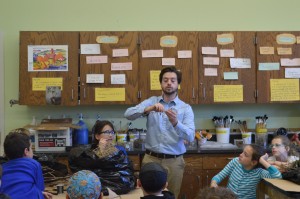

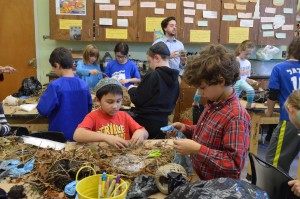
What the Students Learned
In completion of the workshop the students were able to evaluate their own nests in relation to the actual nests that were shown prior to the making portion of the lesson. Having time for reflecting on the lesson and observing the work that they did during the workshop allowed the students to see how difficult it was to replicate a nest, as well as have a more in depth look into the different materials they used in making their nests. The students were asked to do a simple sketch of their nest as well as answer some questions as to the setting in which their nest could be found, and to describe the type of bird that lives in it. Being able to sketch the nest and observe it from a different viewpoint allowed them to see the materials used differently. Many of the students had pieces of trash and plastic in their nest, which they hadn’t noticed prior to the completion of the nest. Enabling the students to take a step back from what they had made and sketch the product of the work they had done during the workshop allows for a more broad understanding of the lesson as a whole.
In asking the students what was the most difficult part of the making their birds nest many responded with not being able to keep the nest together or not being able to start their nest because they didn’t know where the starting point was. In closing the lesson I wanted to try and get this across to the students that our inability to replicate these pieces of avian architecture gives us that much more of a responsibility to protect the environment in which they are created. Besides trying to replicate a bird’s nest the students hopefully went home with greater appreciation for the environment and their ability to make positive change for the protection of the wonderful structures that nature displays.
How can this be used in other facets of teaching?
Developing a learning experience that involves being able to have hands-on interaction with the materials used in nature is vital to a more practical understanding of structures found in nature. Being able to fully understand the process by which structures in nature are constructed there needs to be an experiential aspect to the study of those structures. The ability to not only observe what is in nature from a far, but to put the student in a position to have a tactile relationship with the materials that are used encourages a broader understanding of the subject. Encouraging learning through making should be a necessary component to any teaching structure and this nest-building workshop is but one way to get students out into the field to experience the wonders of our natural world.
First grade visits the RISD Nature Lab!
To wrap up our Teeth unit, The First Grade visited The Edna W. Lawrence Nature Lab at RISD. Where else can one find a Black Bear, a Puffer Fish, the skull of of a Tamarin Monkey (which is really rare), a gigantic honey comb and dried pomegranates?
The cherry on the top? Students were able to hold and touch (almost all) every specimen in the lab.
The day before our visit I showed them this introductory video:
https://blog.etsy.com/en/2009/theres-no-place-like-here-edna-w-lawrence-nature-lab-at-the/
Together, we brainstormed all our questions and reviewed what we had learned about animal teeth and Human teeth. We were ready!
And so, on the rainiest day of the year, armed with the students sketchbooks from Art class, we arrived at the lab soaked to the bone and full of excitement. We were greeted by Melita Morales who serves as the Lab’s STEAM Engagement Coordinator and our very own JCDSRI parent Rachel Atlas. (Rachel is one of the Assistant Curators of the lab.) Together they gave us a wonderful introduction, answered all of the children’s questions and time to explore, draw and write in this amazing place. It was a wonderful way to conclude our unit.
Here is the contact information if you are interested in visiting.
The Edna Lawrence Nature Lab
Rhode Island School of Design
2 College Street
Providence, RI 02903
Located at: 13 Waterman Street, Providence, RI
Phone: 401-454-6451
Enjoy the photos.
